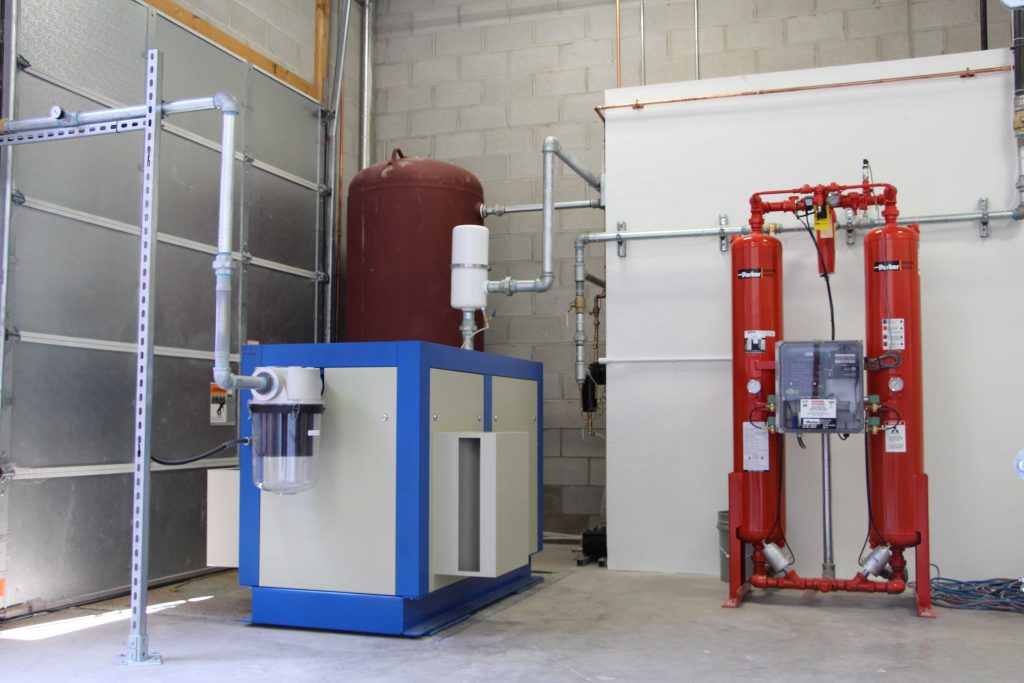Compressed Air Audits Optimize Systems and Provide Quick ROI
Every dollar counts these days, so manufacturers are seeking ways to slash unnecessary spending. Because compressed air systems consume a lot of energy, optimization via a compressed air audit that zeroes in on areas of waste and provides recommendations aimed at lowering compressed air system energy consumption can provide significant savings with a quick return on investment (ROI).
This blog will discuss the benefits of commercial energy audits of the compressed air system, the steps involved in the auditing process and demonstrate the substantial savings that can be achieved.
The Trouble with Compressed Air System Designs

Conservative estimates suggest that compressed air systems can account for up to 30% of a facility’s total energy consumption, which many industrial facilities simply consider as the cost of doing business. However, almost half of that energy usage can typically be chalked up to compressed air energy waste caused by leaks, artificial demand and inappropriate usage.
Leaks in the compressed air piping system are the most obvious and troublesome source of compressed air waste and, as such, provide the greatest opportunity for compressed air energy savings. Artificial demand is when a compressed air system uses more compressed air than it needs to, usually due to operating at a higher pressure than necessary. And, inappropriate usage refers to using compressed air for tasks other than its intended purposes, such as cleaning a workspace with compressed air rather than a vacuum.
And, these types of compressed air system inefficiencies can really add up. According to statistics from the Compressed Air and Gas Institute:
- Poorly designed and maintained compressed air systems can account for up to $3.2 billion in wasted utility payments nationwide.
- A single 1/4 -inch leak in a compressed air piping system can cost a facility between $2,500 and $8,000 annually.
Compressed Air Audits Explained
But how do you know exactly how much energy – and money – is being wasted in your facility? One of the most relied upon methods is to conduct a commercial energy audit of the compressed air system design and its operation.
Compressed air audits can be performed internally, by compressed air maintenance service providers or by energy audit companies, but the steps are generally as follows:
| Site Survey | The first step includes a site survey in which the auditor conducts a walk-through of the facility to evaluate the compressed air system design, including its components and the compressed air piping system. The auditor will actively seek out system flaws and inefficiencies that may be wasting energy. |
| Air Study | Data logging equipment will be placed throughout the system to measure energy usage, discharge air pressure, air flow, air pressure, temperature and dew point over a week to 10-day period. |
| Data Analysis | Air study data is analyzed to find patterns and inconsistencies in usage. Reports that detail system efficiency, compressed air system costs, air flow demand and inappropriate usage and point out areas of inefficiency and loss, incorrectly sized or damaged equipment and other maintenance issues will be provided. Auditors will also make recommendations for improving system issues, such as fixing leaks, curbing over-pressurization, installing flow control valves and/or upgrading components or compressed air pipework systems. |
| System Verification | Following the audit, the owner should correct inefficiencies and upgrade the system as necessary for optimization. After improvements have been made, the auditor will return to measure system performance and identify reductions in energy use, as well as improvements in efficiency and functionality. This information can be used for tracking return on investment. |
Real-World Results from Compressed Air Audits
An article showcased on the Compressed Air Best Practices website outlines how a compressed air audit provided significant savings for two compressed air users.
In the first example, a U.S. manufacturing plant was spending $2.5 million a year to operate its compressed air system. The plant was also experiencing downtime and quality issues related to moisture in the treated air. Following a study conducted by a local energy audit company, a series of energy conservation projects reduced energy costs by approximately $415,655 per year, or 20% of the current usage. The projects also boosted both productivity and quality by stabilizing pressure and eliminating moisture in the compressed air.
In the second instance, the energy audit company provided a leak assessment that identified 31 leaks in the compressed air pipework system. The audit recommended repairing the leaks and initiating a leak management program. The total cost of leak repairs was $3,100, but the annual electric cost savings after the leaks were repaired was estimated to be $39,266 per year.
As the cost of electricity continues to rise, your compressed air system may be costing you much, much more than you realize. One of the most cost-effective ways to pinpoint air compressor waste is to conduct a compressed air audit that can help identify leaks, artificial demand and improper use, as well as recommendations to improve the system. After the audit and implementation of recommended projects, tracking the return on investment usually reveals significant savings in electricity consumption, which will go directly to the bottom line. For more information or to arrange a total air system assessment, please contact JHFOSTER.
